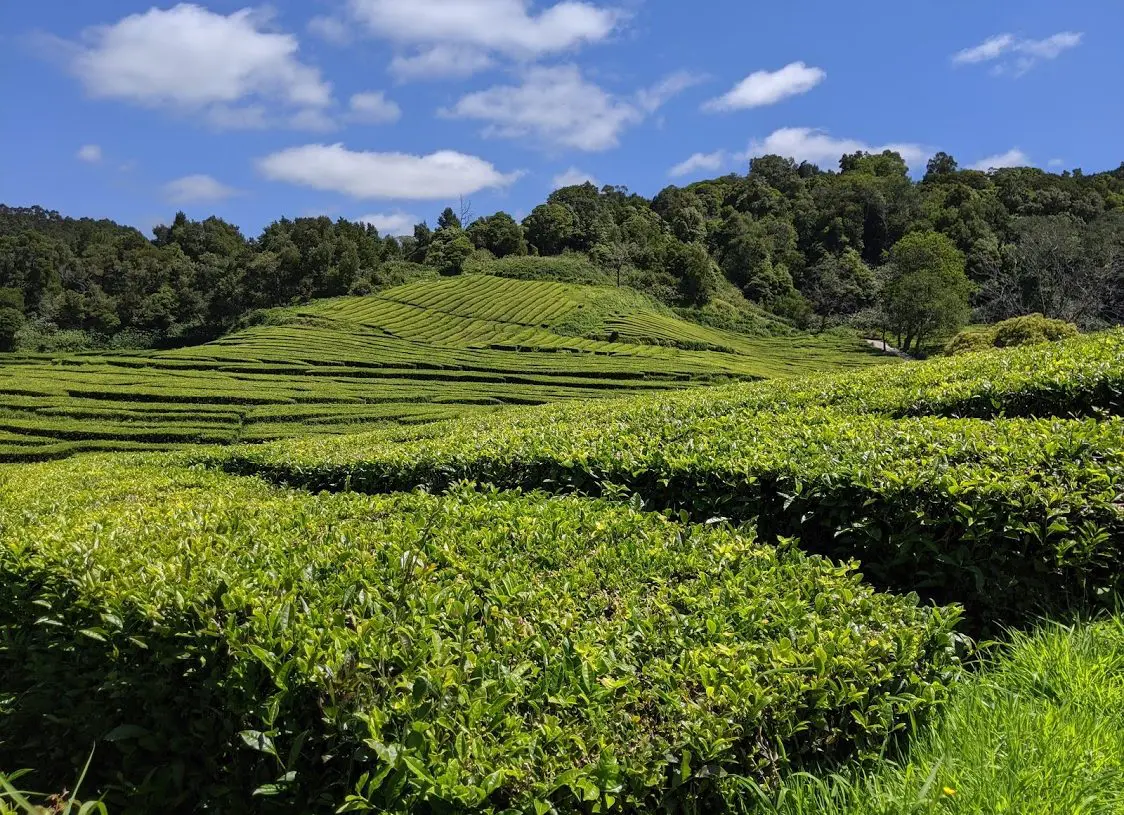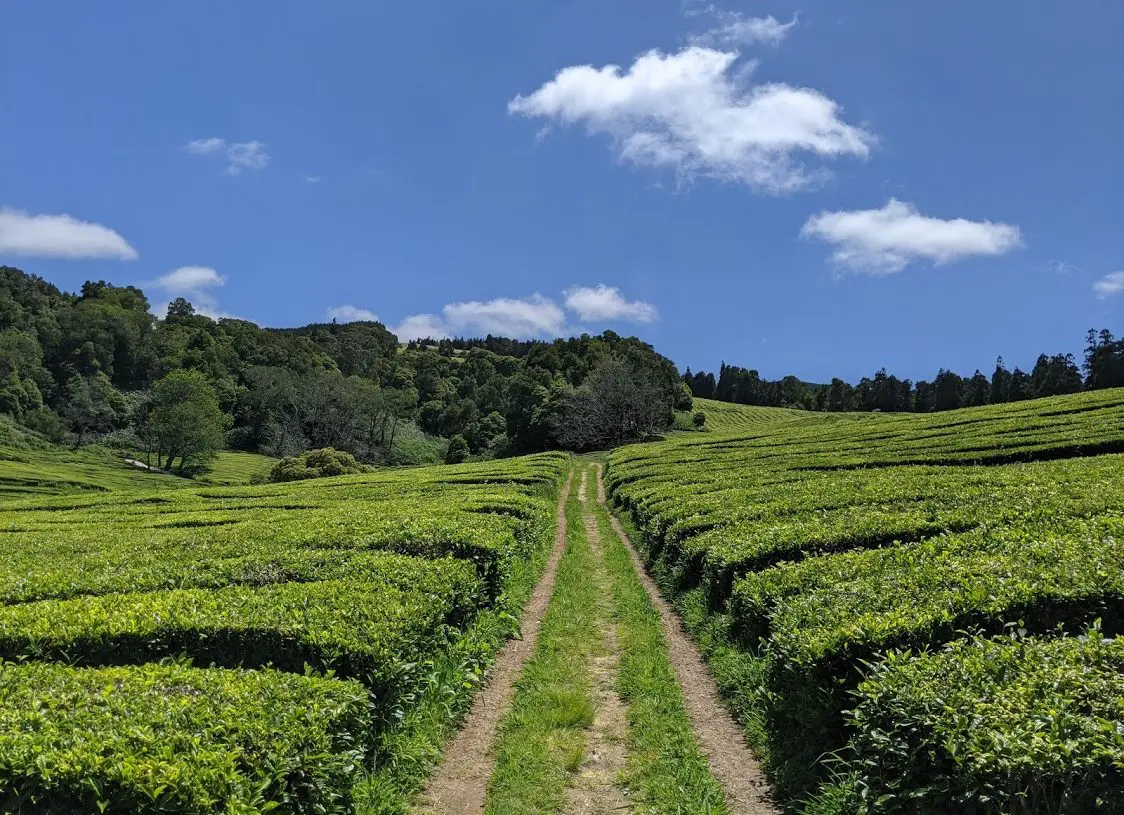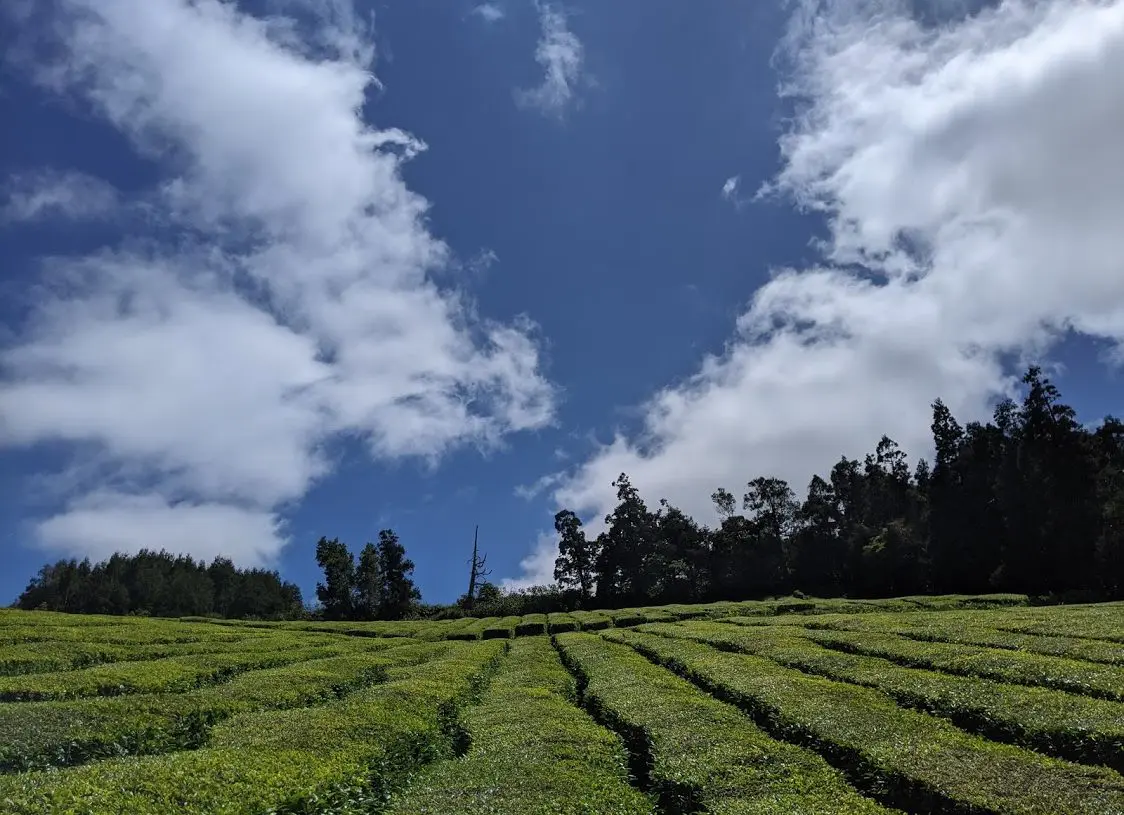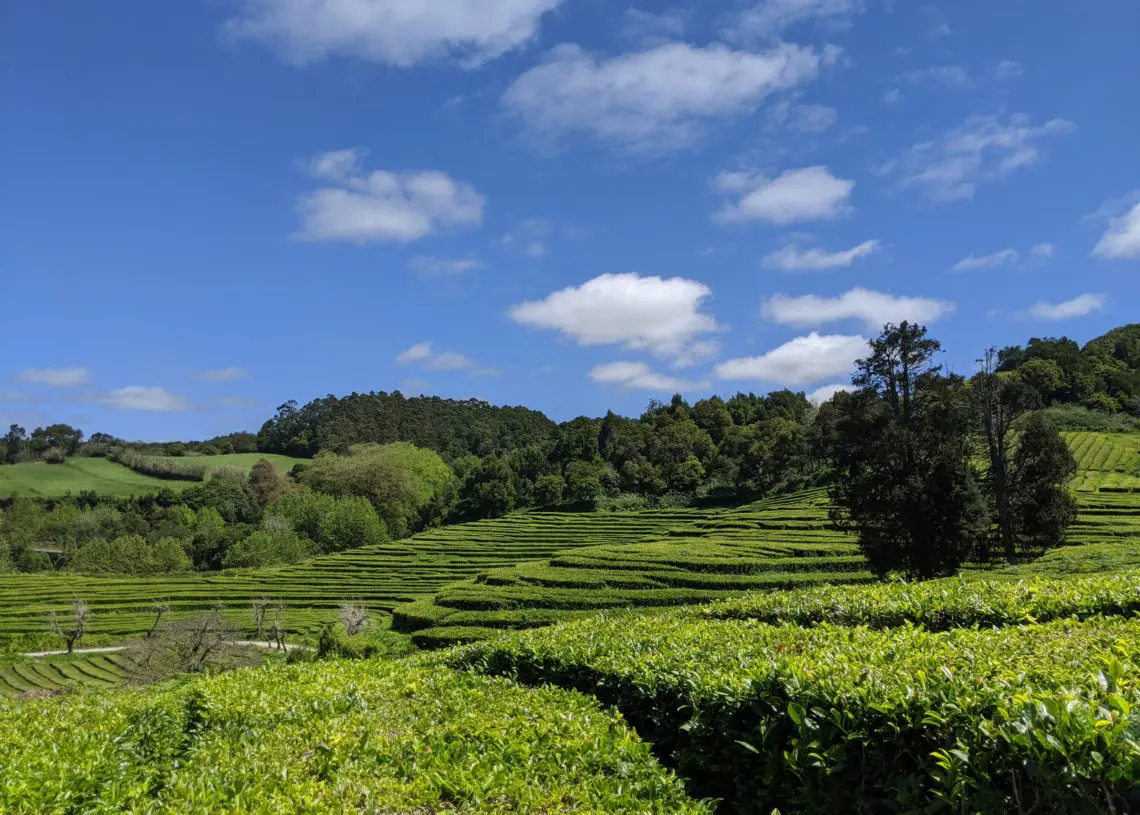On an unusually clear and warm mid-May day we woke to the sounds of birds doing what birds do, which to say, is chirping away in their familiar loquacious manner.
No need for the alarm this morning!
May weather in the Azores can be very unpredictable so no further inspiration was required to get up, pull ourselves together and head out to explore our beautiful island.
First stop was the overlook at Salto do Cavalo. At nearly 2700 feet in elevation it is the second highest peak on the island of Sao Miguel. The view from the overlook is stunning as we marveled at the wide panoramic vista stretching over what is referred to as the “Valley of the Village” and its seven humps. In the distance we could see both north and south sides of the island as well as the village of Furnas. Also visible were Lagoa das Furnas (Furnas lake), the volcano and the perimeter of the crater in which it all rests. In the distance, the sea filled the landscape extending to the horizon. On a clear day such as this the views are as photogenic as you can get.

Not content to end our day there we headed north and then west for some more exploring. On nearly empty roads we drove through the mountains passing through villages with exotic names like Salga, Lomba de São Pedro and Fenais da Ajuda, each complete with a traditional whitewashed church sitting prominently in the village center.
After passing the villages of Lomba da Maia and Maia we encountered kilometer after kilometer of rolling hills covered in tea. With rows of green so lush spilling into the azure colored ocean we felt transported to another place.
Bali perhaps…or Sri Lanka…or maybe India?
No…we were still on the island of Sao Miguel, along the north shore in a place called Gorreana and we had just discovered the oldest, and only, remaining tea plantation in the whole of Europe.
Unable to contain our excitement we pulled into the parking lot not knowing what to expect. As we exited the car we were greeted by a very kind woman named Madalena. She politely informed us that due to the pandemic the plantation had temporarily suspended all tours, but we were welcome to cross the road into the fields to explore as long as we wished.
What a rare treat!
Typically this place would be overrun with tourists and locals out for a day in the sun along with a guided tour of the plant and the terraces. The gift shop, as well as the tasting area, would also be crawling with tea lovers from around the world anxious to sample their wide variety of world class teas.
And here we were all alone, walking amongst the row upon row of neatly manicured tea shrubs. What we were experiencing as we marveled at the 32 acres of terraced land was six generations of hard work, dedication and a profound love of tea dating as far back as 1883.



